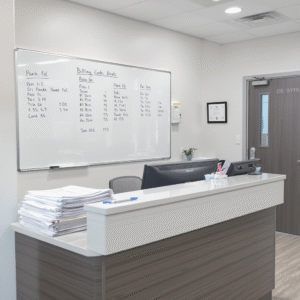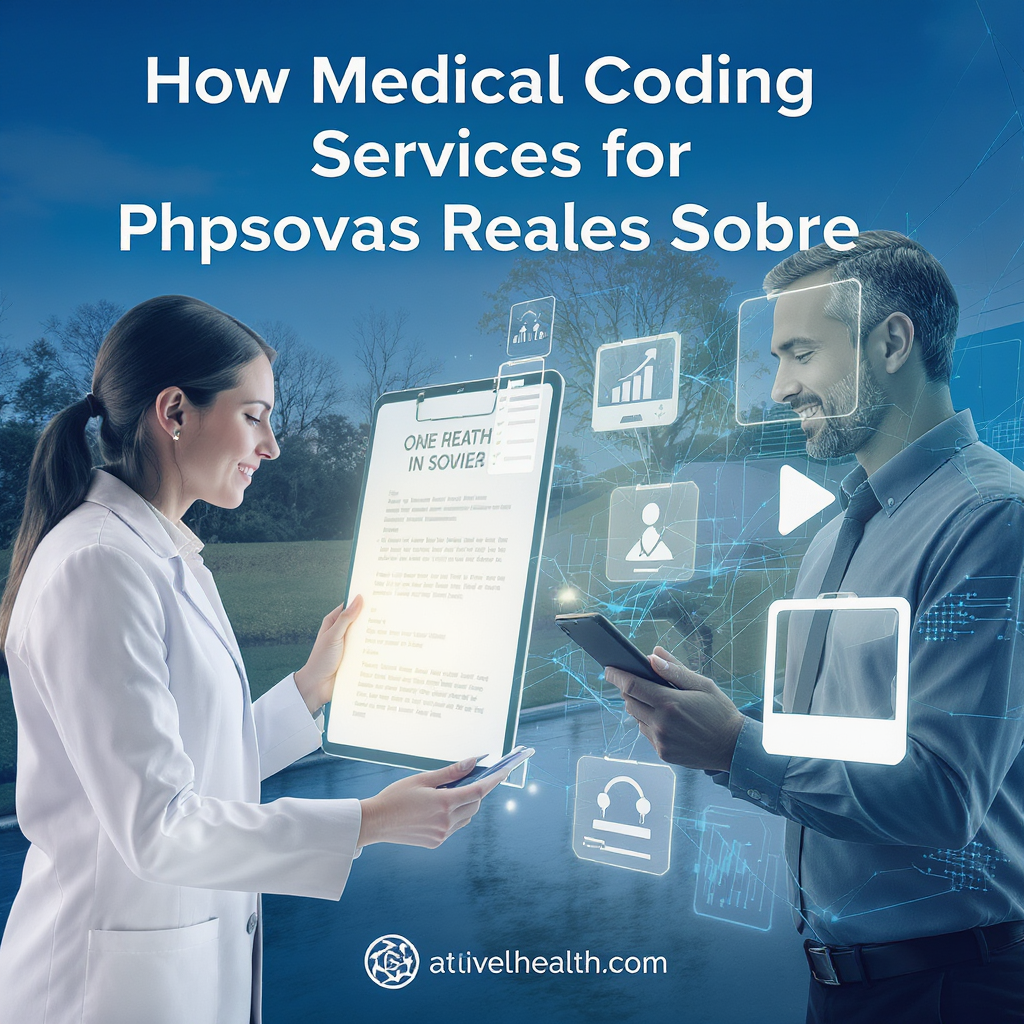The Importance of Charge Entry in Medical Billing
Medical Billing
Medical Billing
In the complex ecosystem of healthcare administration, few processes are as critical yet often overlooked as charge entry in medical billing. This fundamental step serves as the cornerstone of revenue cycle management, directly impacting a healthcare organization’s financial health and operational efficiency. Understanding the intricacies of charge entry and its far-reaching implications is essential for healthcare providers, billing professionals, and administrators who want to optimize their revenue streams while maintaining compliance with industry regulations.

What is Charge Entry in Medical Billing?
Charge entry, also known as data entry or charge capture, is the process of inputting patient encounter information into a medical billing system. This involves translating the services provided during a patient visit into standardized medical codes, including Current Procedural Terminology (CPT) codes, International Classification of Diseases (ICD) codes, and Healthcare Common Procedure Coding System (HCPCS) codes. The process transforms clinical documentation into billable charges that can be submitted to insurance companies and other payers for reimbursement.
The charge entry process typically begins when a healthcare provider completes a patient encounter and documents the services rendered. This documentation, which may include physician notes, procedure reports, diagnostic results, and treatment plans, must then be carefully reviewed and coded by trained professionals. The accuracy of this initial step sets the foundation for the entire billing cycle, making it one of the most crucial components of healthcare revenue management.
The Critical Role of Accuracy in Charge Entry
Accuracy in charge entry cannot be overstated. Even minor errors in coding or data input can lead to claim denials, delayed payments, compliance issues, and reduced revenue. Healthcare organizations lose billions of dollars annually due to coding errors and inaccurate charge entry practices. These losses stem from various sources, including undercoding (failing to capture all billable services), overcoding (billing for services not provided or at higher levels than justified), and incorrect modifier usage.
The financial impact of inaccurate charge entry extends beyond immediate revenue loss. Healthcare providers may face audit penalties, reputation damage, and increased administrative costs associated with claim corrections and resubmissions. Moreover, patterns of coding errors can trigger regulatory scrutiny and potentially lead to compliance violations under programs such as the False Claims Act.

To maintain accuracy, healthcare organizations must invest in comprehensive training programs for their coding and billing staff. These programs should cover the latest coding guidelines, regulatory requirements, and industry best practices. Regular audits and quality assurance measures are also essential to identify and correct potential issues before they impact revenue streams.
Technology’s Impact on Charge Entry Efficiency
The healthcare industry has witnessed significant technological advancements that have revolutionized charge entry processes. Electronic Health Records (EHRs) have streamlined the transition from clinical documentation to billing by providing integrated platforms that capture patient information and facilitate coding workflows. These systems can automatically suggest appropriate codes based on documented procedures and diagnoses, reducing the time required for manual code lookup and entry.
Computer-Assisted Coding (CAC) systems represent another technological breakthrough in charge entry automation. These sophisticated tools use natural language processing and machine learning algorithms to analyze clinical documentation and suggest appropriate codes. While CAC systems cannot completely replace human expertise, they significantly enhance productivity and accuracy when properly implemented and monitored.
Mobile applications and cloud-based platforms have further improved charge entry efficiency by enabling real-time data capture and processing. Healthcare providers can now document services and initiate the billing process immediately after patient encounters, reducing delays and improving cash flow. These technologies also provide greater flexibility for remote work arrangements, which became particularly valuable during the COVID-19 pandemic.
Compliance and Regulatory Considerations
Charge entry in medical billing operates within a highly regulated environment that requires strict adherence to federal and state guidelines. The Centers for Medicare & Medicaid Services (CMS) establishes coding and billing standards that healthcare providers must follow to participate in government reimbursement programs. Additionally, private insurance companies often have their own specific requirements and guidelines that must be considered during the charge entry process.
The Health Insurance Portability and Accountability Act (HIPAA) adds another layer of complexity to charge entry operations. Billing professionals must ensure that patient information is handled securely and that appropriate privacy measures are in place throughout the coding and billing process. This includes implementing access controls, maintaining audit trails, and providing staff training on privacy requirements.
Compliance with the False Claims Act is particularly critical in charge entry operations. This federal law imposes severe penalties for knowingly submitting false or fraudulent claims to government healthcare programs. Healthcare organizations must establish robust compliance programs that include regular training, monitoring procedures, and corrective action protocols to prevent violations.

Best Practices for Effective Charge Entry
Implementing best practices in charge entry requires a comprehensive approach that addresses technology, training, and quality assurance. Healthcare organizations should establish clear policies and procedures that define roles and responsibilities for all stakeholders involved in the charge entry process. These policies should address documentation requirements, coding guidelines, quality review procedures, and performance metrics.
Regular training and continuing education are essential components of an effective charge entry program. Staff members should receive initial comprehensive training on coding principles, software systems, and compliance requirements. Ongoing education should address coding updates, regulatory changes, and emerging industry trends. Many organizations find that investing in professional certifications for their coding staff improves accuracy and demonstrates commitment to quality.
Quality assurance programs should include regular audits of coded charges to identify trends and opportunities for improvement. These audits can be conducted internally or by third-party organizations, depending on the healthcare provider’s resources and preferences. The results of these audits should be used to provide targeted feedback to staff members and to refine training programs.
Documentation improvement initiatives can significantly enhance charge entry accuracy and efficiency. Healthcare providers should work closely with clinical staff to ensure that documentation adequately supports the services being billed. This may involve providing training to physicians and other healthcare professionals on documentation requirements and the impact of documentation quality on revenue cycle performance.
Common Challenges and Solutions
Healthcare organizations face numerous challenges in maintaining effective charge entry operations. Staff turnover is a persistent issue in the medical billing industry, leading to training costs and temporary productivity decreases. Organizations can address this challenge by creating competitive compensation packages, providing career development opportunities, and fostering positive work environments that encourage retention.
The complexity of coding guidelines and frequent updates present another significant challenge. Healthcare organizations must stay current with coding changes and ensure that their staff members receive timely training on new requirements. Subscribing to professional publications, attending industry conferences, and participating in professional organizations can help billing professionals stay informed about industry developments.
Integration between different software systems can create technical challenges that impact charge entry efficiency. Healthcare organizations should carefully evaluate system compatibility during technology procurement and implementation processes. Working with experienced vendors and consultants can help identify potential integration issues and develop appropriate solutions.
Managing the increasing volume of patient encounters while maintaining accuracy and efficiency requires careful resource planning and process optimization. Healthcare organizations may need to consider outsourcing arrangements or technology solutions that can help manage workload fluctuations without compromising quality.
The Future of Charge Entry in Medical Billing
The future of charge entry in medical billing will likely be shaped by continued technological advancement and evolving regulatory requirements. Artificial intelligence and machine learning technologies are expected to play increasingly important roles in automating routine coding tasks and identifying potential accuracy issues. These technologies may eventually enable real-time charge capture and processing, further reducing delays in the revenue cycle.
Interoperability improvements between different healthcare systems and applications will likely streamline charge entry processes by reducing manual data entry requirements and improving information sharing. As healthcare organizations continue to adopt value-based care models, charge entry processes may need to adapt to capture new types of quality metrics and outcome measures.

Regulatory changes will continue to influence charge entry practices as government agencies and private payers modify their reimbursement methodologies and compliance requirements. Healthcare organizations must remain vigilant about these changes and be prepared to adapt their processes and systems accordingly.
Conclusion
Charge entry represents a critical foundation of successful medical billing operations that directly impacts healthcare organizations’ financial performance and regulatory compliance. The accuracy and efficiency of charge entry processes determine whether healthcare providers can effectively capture the revenue they have earned through patient care services. As the healthcare industry continues to evolve, organizations that invest in technology, training, and quality assurance measures will be best positioned to optimize their charge entry operations and achieve sustainable financial success.
Healthcare leaders must recognize that charge entry is not merely an administrative function but a strategic component of revenue cycle management that requires ongoing attention and investment. By implementing best practices, embracing technological innovations, and maintaining a commitment to accuracy and compliance, healthcare organizations can transform their charge entry operations into competitive advantages that support their mission of providing quality patient care while maintaining financial viability.



